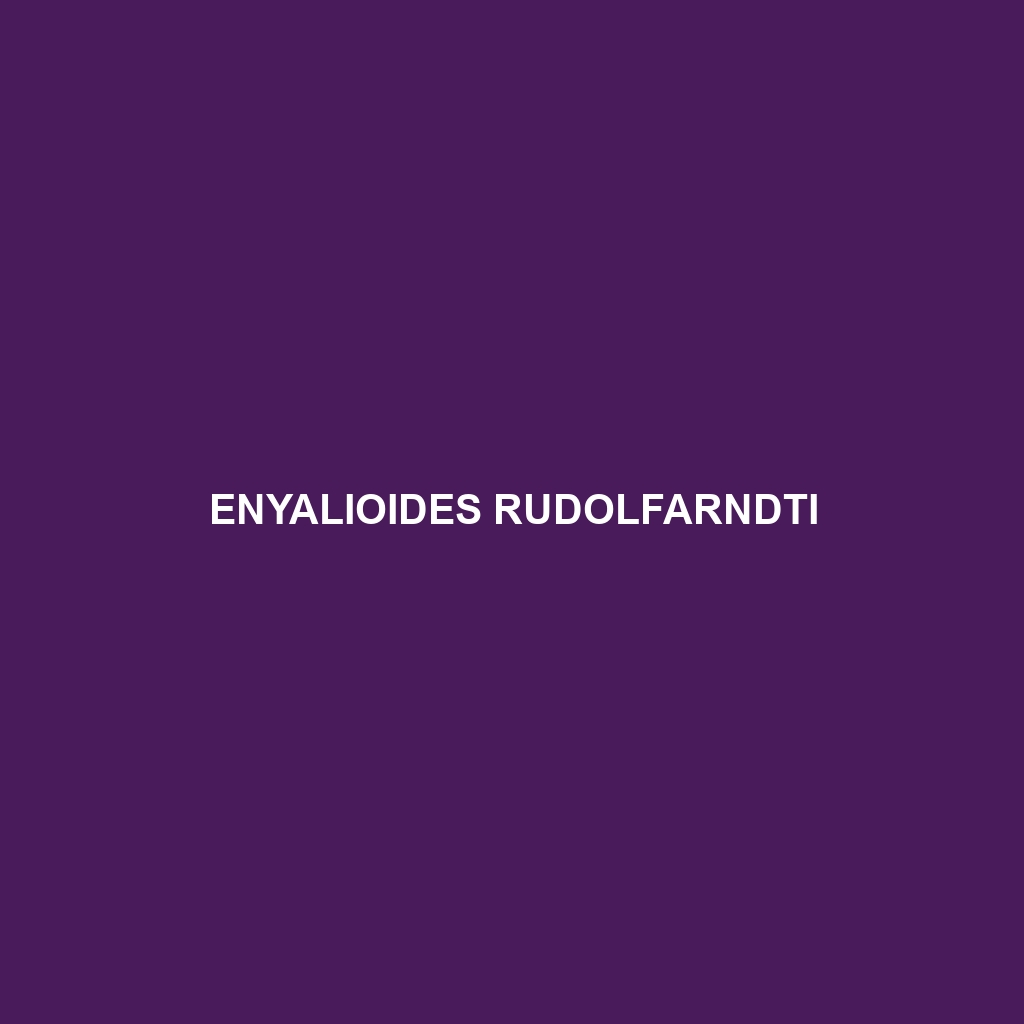Common Name
Enyalioides rudolfarndti
Scientific Name
Enyalioides rudolfarndti
Habitat
Enyalioides rudolfarndti, commonly known as Rudolf Arndt’s Enyalioid, is primarily found in the lush, humid rainforests of southeastern Peru. This region is characterized by a tropical climate, featuring high levels of precipitation and warm temperatures year-round. The species thrives in areas rich in biodiversity, often inhabiting understory layers full of dense foliage and robust vegetation. Additionally, this lizard occupies environments near rivers and streams, where humidity is high, and the leaf litter provides numerous hiding spots. As a result, the primary geographic regions include the Andes foothills and adjacent lowland tropical forests, showcasing the species’ adaptability to various rainforest habitats.
Physical Characteristics
Enyalioides rudolfarndti exhibits distinct physical attributes that set it apart from other lizard species. Adult individuals typically range from 15 to 25 cm in total length. They possess a robust body and a slightly flattened head, alongside elongated limbs that aid in climbing. The coloration is primarily a vivid green, which serves as excellent camouflage among the lush foliage. Remarkably, some specimens display intricate patterns of lighter spots or bands that enhance their ability to blend with their environment. Additionally, males can be identified by their more vibrant colors and noticeable dewlap, which is used in mating displays.
Behavior
The behavior of Enyalioides rudolfarndti is fascinating, reflecting typical reptilian habits and unique adaptations. This species is primarily diurnal, actively foraging during the day, while it retreats to sheltered areas at night. Although solitary in nature, these lizards exhibit territorial behaviors, especially during the breeding season. Mating rituals involve elaborate displays of color and movements by males to attract females. Interestingly, they can also engage in social interactions, exemplified by head bobbing and posturing to establish dominance among peers.
Diet
Enyalioides rudolfarndti is classified as an insectivore, predominantly feeding on a variety of invertebrates found in its rainforest habitat. Its diet consists mainly of ants, beetles, and caterpillars, while occasional plant matter may be consumed, categorizing them as opportunistic feeders. This species has adapted to exploit food resources found within the leaf litter and lower vegetation, demonstrating a foraging strategy that maximizes its energy intake while camouflaging effectively from predators.
Reproduction
Reproductive behaviors in Enyalioides rudolfarndti are timed with environmental factors, with mating occurring during the wet season when temperatures and humidity levels peak. The gestation period typically ranges from 30 to 60 days, after which females lay clutches of 2 to 5 eggs in moist leaf litter. Parental care is minimal, as adults do not guard their eggs; however, the high humidity and concealed environment offer protection from potential threats. Hatchlings emerge after approximately two months, fully independent and ready to fend for themselves in their dense rainforest habitat.
Conservation Status
The conservation status of Enyalioides rudolfarndti remains a point of concern, as habitat loss due to deforestation and agricultural expansion in the Amazon significantly threatens their population. This species is currently classified as vulnerable according to the IUCN Red List, highlighting that continuous habitat degradation could jeopardize its long-term survival. Conservation efforts are underway, focusing on habitat preservation and raising awareness of the ecological importance of these lizards within their rainforest ecosystems.
Interesting Facts
One intriguing aspect of Enyalioides rudolfarndti is its ability to change color slightly for camouflage, which assists in avoiding predation by larger animals. Additionally, this species has a fascinating adaptation wherein it can regrow its tail after losing it to a predator—a common survival tactic among lizards. Such remarkable traits capture the interest of both researchers and herpetology enthusiasts alike, making Enyalioides rudolfarndti a subject of ongoing scientific study.
Role in Ecosystem
Enyalioides rudolfarndti plays a significant ecological role within its habitat. As an insectivore, it helps regulate insect populations, contributing to the balance of the rainforest ecosystem. Additionally, the lizard serves as both prey and predator, forming integral connections within the food web. By aiding in the dispersal of plant seeds through their consumption of fruits, they may contribute indirectly to the propagation of various flora, thus maintaining the health of their lush environment. Such interactions emphasize the importance of conserving Enyalioides rudolfarndti and its habitat to ensure a healthy ecosystem.
